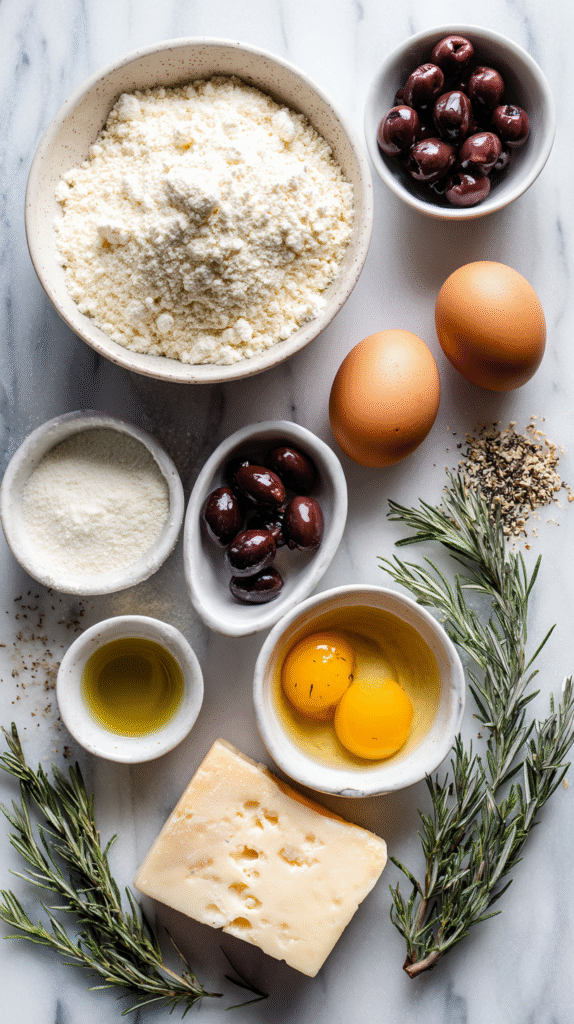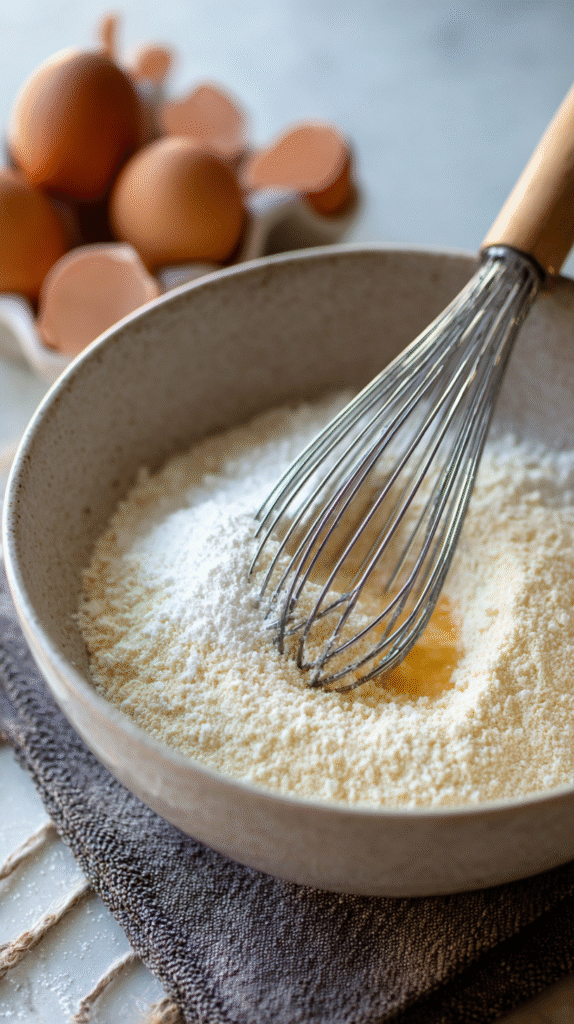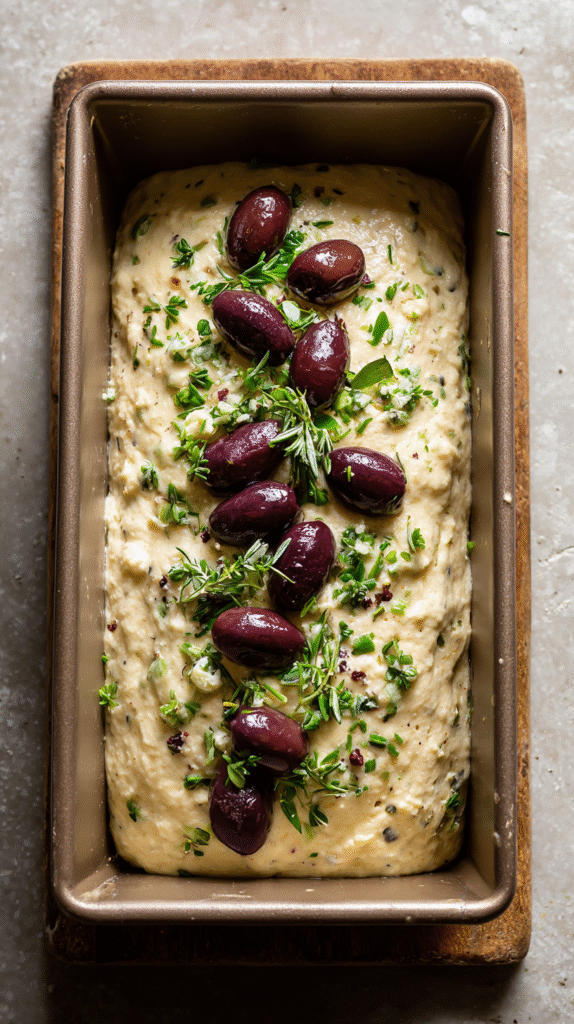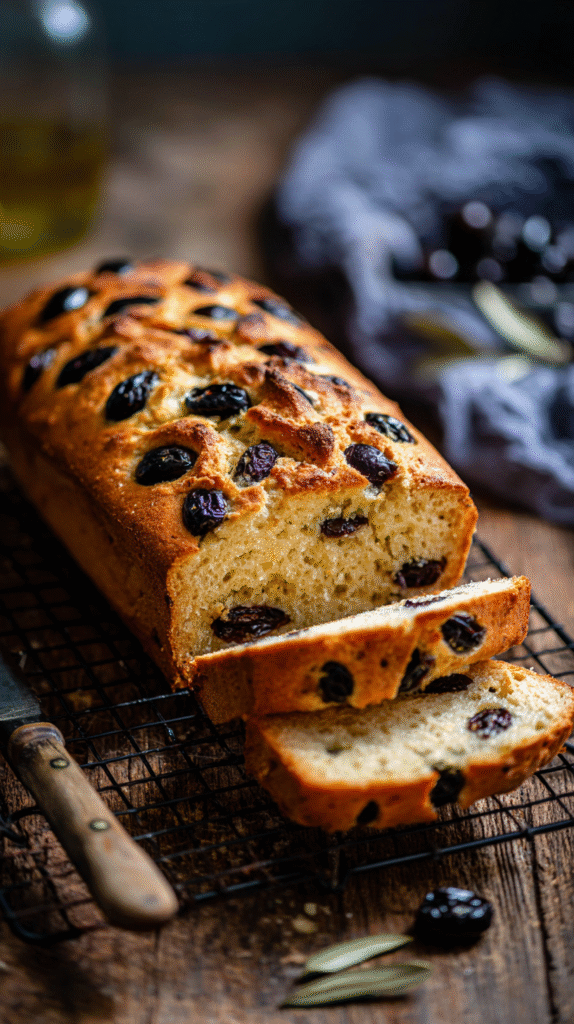Keto Olive Bread: A Flavorful Low-Carb Loaf You’ll Love
Bread has always held a special place in our kitchens, but when you’re eating low-carb, finding the right loaf can feel like chasing a moving target. That’s where Keto Olive Bread comes in—savory, aromatic, and perfectly sliceable, it’s proof that keto-friendly baking can be just as satisfying as the classic kind.
In this article, we’ll explore the story behind this bread, why it works so well on a keto diet, and how to bake it at home without stress. We’ll also answer common questions about keto bread storage, frequency of eating, and its nutritional ups and downs.
The Story Behind Keto Olive Bread
Baking comfort with a Mediterranean twist
When I think of bread, I think of weekends at my grandmother’s table—her kitchen always smelled like warm loaves cooling by the window. Years later, while traveling in Barcelona, I discovered rustic olive breads that instantly reminded me of those cozy afternoons. That moment inspired me to recreate something similar but low-carb, and that’s how my Keto Olive Bread came to life. It’s the kind of recipe that feels indulgent but stays within your goals, making it perfect for everyday meals.
This loaf brings together the nutty depth of almond flour, the richness of olive oil, and the briny bite of Kalamata and green olives. Each slice feels like it was made for dipping in a little extra virgin olive oil or pairing with a cheese board. If you’ve ever tried my keto almond flour bread or enjoyed the lighter touch of low-carb dinner rolls, this recipe carries the same ease while offering a savory twist.
Why Keto Olive Bread deserves a spot in your kitchen
Keto baking often gets a bad rap for being bland or overly dense, but this bread proves otherwise. It’s soft inside, golden outside, and has the perfect balance of texture thanks to almond and coconut flours working together. The olives don’t just add flavor—they also help lock in moisture, so your loaf stays fresh longer than most keto breads.
Unlike traditional loaves, Keto Olive Bread is gluten-free, lower in carbs, and made without complicated steps. If you’re looking for a reliable staple that can carry you through breakfast, lunch, and dinner, this bread delivers. It’s one of those recipes that feels homemade yet a little gourmet, much like the pastries I often feature on my blog, from rustic tarts to everyday keto muffins. Whether you’re new to keto or already deep into low-carb living, this bread will quickly become one of your favorites.
Why Keto Olive Bread Works
The health perks of baking keto-style
One of the best things about Keto Olive Bread is that it supports your low-carb lifestyle without making you feel deprived. Traditional bread can spike blood sugar levels, leaving you feeling sluggish, but this version uses almond flour and coconut flour to keep carbs minimal and fiber high. That means you stay full longer and avoid the mid-afternoon crash. The olives provide healthy fats and antioxidants, which pair beautifully with the keto way of eating.
This loaf also offers versatility—it’s not just for sandwiches. You can slice it thin and toast it for breakfast, top it with avocado for a quick snack, or serve it alongside hearty soups. If you’ve ever browsed through my comforting keto soups or looked for healthy meal prep ideas, you’ll see how easy it is to pair this bread with nearly anything on your table.
Flavor twists and variations to try
The beauty of this recipe lies in how customizable it is. Want a sharper taste? Add crumbled feta or parmesan into the batter. Looking for a herby aroma? Try rosemary, oregano, or thyme for a Mediterranean flair. Even sun-dried tomatoes can stand in for olives if you’re craving something slightly sweeter.
Another trick is to bake this bread in muffin tins instead of a loaf pan for grab-and-go portions—perfect for busy mornings. If you’re entertaining, cut the loaf into small cubes and serve it on a platter with dips or cheeses. I’ve used this bread as a base for my keto garlic bread bites and it always gets rave reviews.
By experimenting with mix-ins, you can create endless variations while keeping the structure of the bread intact. That’s what makes Keto Olive Bread such a reliable recipe: once you’ve mastered the base, you can adapt it to your taste buds again and again.
Also Read: Crispy Bang Bang Salmon Bites Recipe That You’ll Crave Again
Baking and Storing Keto Olive Bread
Tips for the perfect bake every time
Baking with low-carb flours can feel tricky at first, but once you know a few tips, your Keto Olive Bread will come out perfectly every time. First, always measure your almond flour and coconut flour accurately—too much can make the loaf dry. I recommend using a kitchen scale for best results. Beating the eggs well before mixing them into the batter also helps create a lighter crumb.
When adding olives, make sure they’re well-drained and patted dry. Excess moisture can weigh the bread down. If you want a more golden crust, brush the top of your loaf with a little olive oil before baking. And don’t skip the parchment paper—it makes removing the bread from the pan so much easier.
If you’ve tried my keto zucchini bread or experimented with almond flour pancakes, you know that texture is everything. This recipe strikes the right balance: sturdy enough for slicing but soft enough for sandwiches.
How to store your loaf for freshness
The question I get most often is: how long will keto bread last? The good news is that this Keto Olive Bread stays fresh longer than most grain-free breads. You can store it in an airtight container at room temperature for up to two days, but because it’s so moist, refrigeration is best. In the fridge, it keeps for about five days, and if you want to make it ahead, you can freeze individual slices for up to two months.
To reheat, just pop a slice in the toaster or warm it in the oven for a few minutes. I love serving it toasted with butter or alongside low-carb pasta dishes for a full Mediterranean-inspired meal. Freezing also makes it easy to portion out, so you’ll always have keto-friendly bread ready when cravings hit.
Serving and Enjoying Keto Olive Bread
Delicious ways to enjoy your loaf
One of the best parts of making Keto Olive Bread is discovering all the ways it can fit into your meals. For breakfast, I love toasting a slice and topping it with cream cheese or avocado—it’s hearty, satisfying, and keeps me fueled all morning. For lunch, try it as a base for open-faced sandwiches with smoked salmon, turkey, or grilled veggies. It’s a low-carb alternative that doesn’t feel like a compromise.
This bread also shines at dinnertime. Imagine a warm basket of slices served alongside roasted chicken or a comforting stew. If you’ve browsed through my easy weeknight dinners or peeked at my collection of Mediterranean-inspired recipes, you’ll see just how well this loaf fits in. It’s rustic enough for casual family meals but elegant enough for entertaining friends.
Making it a staple in your keto lifestyle
Keto eating can sometimes feel restrictive, but having staples like Keto Olive Bread makes it enjoyable and sustainable. It’s a recipe that brings comfort, flavor, and flexibility—all while keeping carbs low. The savory olives and herbs make each bite feel gourmet, so you never feel like you’re “missing out” on traditional bread.
I often recommend making two loaves at once: enjoy one fresh and freeze the other for later. That way, you’ll always have a keto-friendly option ready when cravings strike. This bread isn’t just about staying on track with your goals—it’s about adding variety and joy to your meals. Whether you’re pairing it with soups, salads, or simply enjoying it with a drizzle of olive oil, it’s proof that keto baking can be both practical and indulgent.
If you’ve loved trying my other low-carb bakes like keto bagels or fluffy almond flour biscuits, then this olive bread will become a go-to favorite in your kitchen too.
Frequently Asked Questions
How long will keto bread last?
Keto bread, including this Keto Olive Bread, lasts about 2 days at room temperature or up to 5 days in the fridge. For longer storage, freeze individual slices and reheat when needed.
What are the downsides of keto bread?
Some keto breads can be dense or dry, but this recipe balances almond and coconut flours to create a lighter texture. The main downside is a shorter shelf life compared to traditional bread, which is why refrigeration or freezing is recommended.
How often should you eat keto bread?
Keto bread can be enjoyed regularly as long as it fits within your daily carb limit. Because it’s rich in fiber and healthy fats, this Keto Olive Bread can be part of your routine meals without spiking blood sugar.
Should keto bread be refrigerated?
Yes, refrigeration is best for freshness and safety. Keto breads are higher in moisture, so keeping them in the fridge extends their shelf life and prevents spoilage.
Conclusion
Keto baking doesn’t need to be complicated, and this Keto Olive Bread proves it. With just a handful of wholesome ingredients, you can bake a loaf that’s full of flavor, soft in texture, and perfectly suited for your low-carb lifestyle. Whether you’re enjoying it toasted for breakfast, layered with toppings for lunch, or paired with a hearty dinner, it’s a recipe that blends comfort with nutrition.
By experimenting with variations and keeping a loaf ready in your fridge or freezer, you’ll always have a delicious keto-friendly bread on hand. If you’ve been missing the ritual of slicing into a fresh loaf, this bread is here to bring it back—without the carbs.
Please let me know how it turned out for you! Leave a comment below and tag @foodiecreator on Instagram and hashtag it #foodiecreator. I’d love to see how you make it your own.
PrintKeto Olive Bread: A Flavorful Low-Carb Loaf You’ll Love
- Total Time: 55 minutes
- Yield: 1 loaf (10 slices) 1x
Description
Savory and low-carb, this Keto Olive Bread combines almond flour, coconut flour, and briny olives for a deliciously soft loaf perfect for any meal.
Ingredients
2 cups almond flour
¼ cup coconut flour
2 tsp baking powder
½ tsp baking soda
1 tsp sea salt
4 large eggs
⅓ cup olive oil
½ cup unsweetened Greek yogurt (or sour cream)
½ cup pitted Kalamata olives, chopped
¼ cup green olives, sliced
1 tsp dried rosemary (or thyme)
½ cup shredded mozzarella (optional)
Instructions
1. Preheat oven to 350°F (175°C). Line a loaf pan with parchment paper.
2. Whisk almond flour, coconut flour, baking powder, baking soda, and salt.
3. In another bowl, beat eggs, olive oil, and yogurt until smooth.
4. Mix wet and dry ingredients to form a thick batter.
5. Fold in olives, rosemary, and cheese if using.
6. Pour batter into loaf pan and smooth top.
7. Bake 35–40 minutes until toothpick comes out clean.
8. Cool in pan 10 minutes, then transfer to wire rack before slicing.
Notes
Store in fridge up to 5 days or freeze slices for 2 months.
Tastes amazing toasted with butter or dipped in olive oil.
Swap olives with sun-dried tomatoes for variation.
- Prep Time: 15 minutes
- Cook Time: 40 minutes
- Category: Bread
- Method: Baking
- Cuisine: Keto / Low-Carb
Nutrition
- Serving Size: 1 slice
- Calories: 190
- Sugar: 1g
- Sodium: 320mg
- Fat: 16g
- Saturated Fat: 3g
- Unsaturated Fat: 12g
- Trans Fat: 0g
- Carbohydrates: 5g
- Fiber: 3g
- Protein: 7g
- Cholesterol: 55mg













